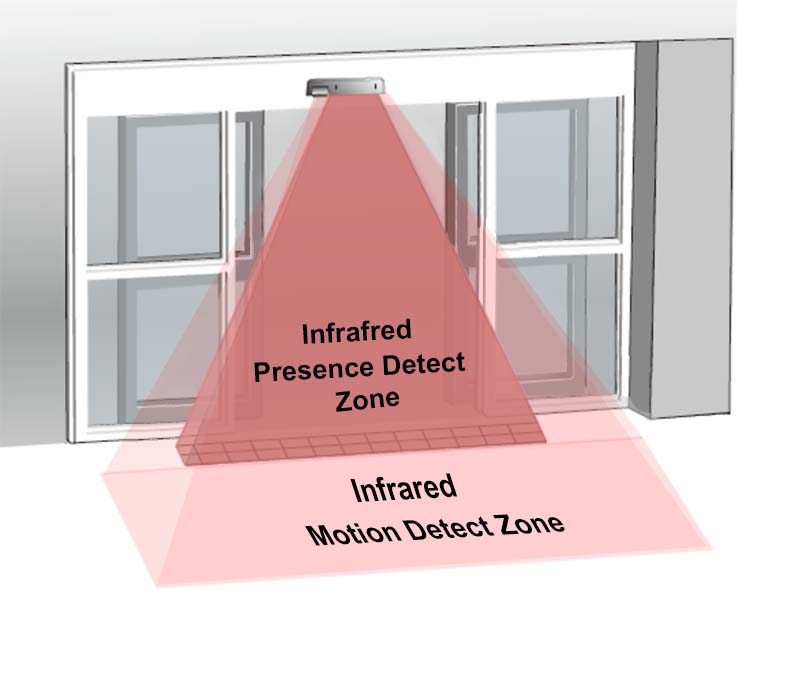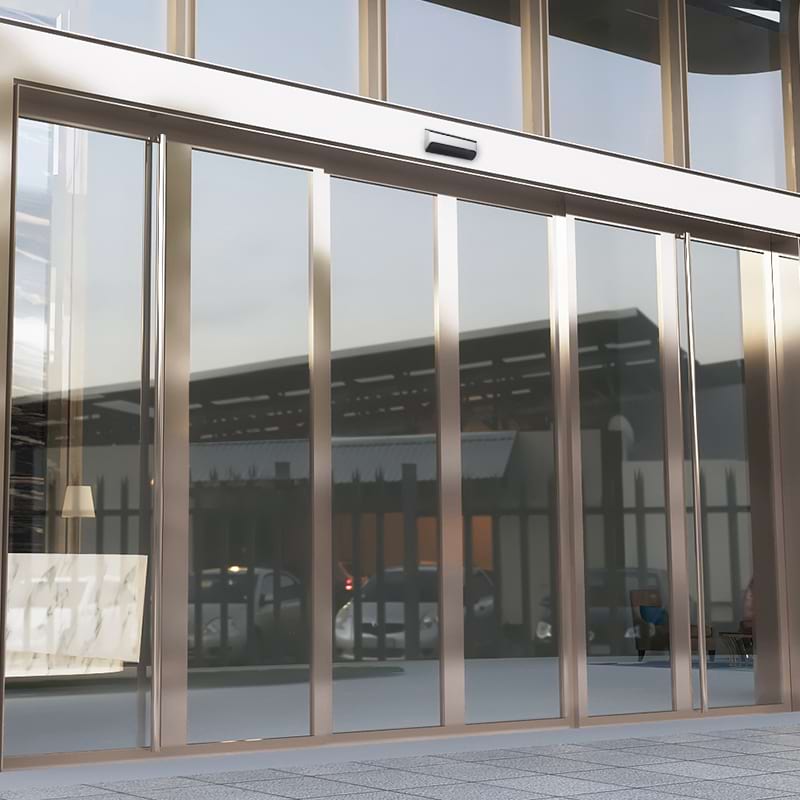Reaction Speed of Automatic Door Sensors After Detecting an Object and Their Ability to Trigger the Automatic Door Switch
Introduction
Automatic doors are ubiquitous in modern life, from shopping malls and office buildings to residential areas. A core component of automatic doors is the sensor, whose detection capability and reaction speed directly affect the efficiency and safety of door operation. This article delves into the reaction speed of automatic door sensors after detecting an object and whether they can promptly trigger the door switch.

Working Principle of Automatic Door Sensors
Automatic door sensors detect objects using technologies such as infrared, microwave radar, or ultrasound. When a sensor detects an object entering its detection area, it sends a signal to the controller, which then drives the motor to open the door. This process requires the sensor to have high sensitivity and fast reaction capability to ensure the door can open or close promptly, avoiding collisions or other safety incidents.
Infrared Sensors
Infrared sensors detect objects by emitting and receiving infrared light. When an object enters the infrared-covered area, it reflects or blocks the infrared light, and the sensor detects this change and immediately sends a signal to the controller. Infrared sensors are advantageous due to their low cost and fast reaction speed, making them suitable for places with high foot traffic.
Microwave Radar Sensors
Microwave radar sensors detect objects by emitting microwave signals and receiving the reflected signals. When an object enters the detection area, it alters the frequency or intensity of the microwave signal. The sensor analyzes these changes to determine the object's position and movement. Microwave radar sensors have high detection accuracy and penetration capability, allowing them to detect through some non-metallic materials, making them suitable for places requiring high precision detection.
Ultrasonic Sensors
Ultrasonic sensors detect objects by emitting high-frequency sound waves and receiving the echoes. When an object enters the detection area, the reflected sound waves change, and the sensor analyzes these changes to determine the object's position. Ultrasonic sensors are suitable for special environments, such as high temperatures or places with a lot of dust.
Reaction Speed of Sensors
The reaction speed of a sensor refers to the time from detecting an object to sending a signal to the controller. This time directly affects the opening and closing speed of the automatic door. Generally, the reaction speed of a sensor is influenced by the following factors:
Type of Technology
Different types of sensors have varying reaction speeds. Infrared and microwave radar sensors typically have reaction speeds in the millisecond range, capable of detecting objects and sending signals in a very short time. Ultrasonic sensors may be slightly slower due to processing the propagation and reflection of sound waves but still within a few hundred milliseconds.
Detection Algorithm
The detection algorithm within the sensor also affects its reaction speed. Advanced sensors use complex signal processing and analysis algorithms to quickly identify objects and determine their movement status. These algorithms include Fast Fourier Transform (FFT) and machine learning, enabling signal processing and decision-making in a very short time.
Hardware Performance
The hardware performance of a sensor, including the sensitivity of the sensor and the speed of the signal processing chip, directly affects the reaction speed. High-performance sensors and processing chips can process detection signals more quickly, reducing latency.
Environmental Factors
Environmental factors such as temperature, humidity, and lighting can also affect the sensor's reaction speed. For instance, high temperatures may affect the performance of electronic components, extending the sensor's reaction time. In environments with significant lighting changes, the detection effectiveness of infrared sensors may be interfered with, affecting their reaction speed.
Trigger Mechanism of Automatic Doors

After a sensor detects an object and sends a signal, the automatic door's controller receives the signal and drives the motor to open or close the door. In this process, the processing speed of the controller and the reaction time of the motor are equally crucial.
Processing Speed of the Controller
The processing speed of the controller refers to the time from receiving the sensor signal to sending the control command. Modern automatic door controllers typically use high-speed microprocessors, capable of processing signals and making decisions in a very short time. The processing speed of the controller is generally in the millisecond range, ensuring that the automatic door can respond promptly to the sensor's detection signal.
Reaction Time of the Motor
The reaction time of the motor refers to the time from receiving the control command to starting the action. The reaction time of the motor is influenced by its type and performance. Brushless DC motors and stepper motors have fast reaction speeds, typically within a few milliseconds to tens of milliseconds. High-performance motors ensure that the automatic door can open or close quickly after the sensor detects an object.
Mechanical Structure of the Door
The mechanical structure of the door also affects its opening and closing speed. Automatic doors made with lightweight materials and low-friction hinges can open and close more quickly. Additionally, a well-designed door can reduce wind resistance and inertia, further improving the opening and closing speed.
Reaction Speed and Trigger Ability in Practical Applications
In practical applications, the reaction speed and trigger ability of automatic door sensors are influenced by various factors. The following are some typical application scenarios and their requirements for sensor reaction speed:
Shopping Malls and Office Buildings
In places with high foot traffic such as shopping malls and office buildings, automatic doors need extremely fast reaction speeds to ensure smooth passage of people. Sensors generally need to detect people and trigger the door-opening action within a few milliseconds, with the controller and motor reaction times also needing to be within tens of milliseconds.
Hospitals and Laboratories
In environments like hospitals and laboratories, automatic doors not only need to be fast but also require high precision and reliability. Sensors need to accurately detect the movement of people and equipment, avoiding false triggers or missed triggers. These places also require high door-opening speed, typically completing the entire opening and closing process within a few hundred milliseconds.
Residential and Office Areas
In residential and office areas, where the frequency of automatic door use is lower, there is still a need for relatively fast reaction speeds and reliable trigger ability. The reaction speed of sensors is generally within a few hundred milliseconds, allowing the door to open quickly when someone approaches.
Conclusion
The reaction speed and trigger ability of automatic door sensors are crucial for determining the efficiency and safety of automatic doors. By selecting the appropriate sensor technology, optimizing detection algorithms, and improving hardware performance, the reaction speed and reliability of sensors can be significantly enhanced. The fast reaction of the controller and motor is equally important to ensure that the automatic door can promptly open or close upon detecting an object.
In practical applications, different scenarios have varying requirements for the reaction speed and trigger ability of automatic door sensors. Through proper selection and optimization, it can be ensured that automatic doors operate efficiently and safely in various environments. In the future, with the continuous advancement of sensing technology and intelligent control technology, the performance of automatic door sensors will further improve, providing more convenience and safety for people's lives.







